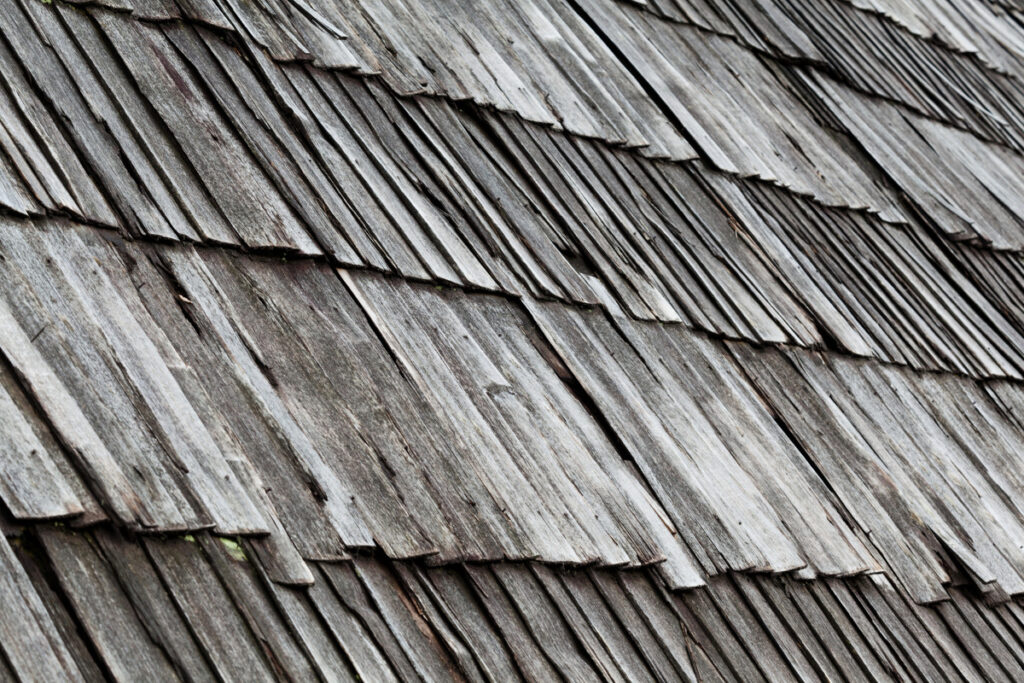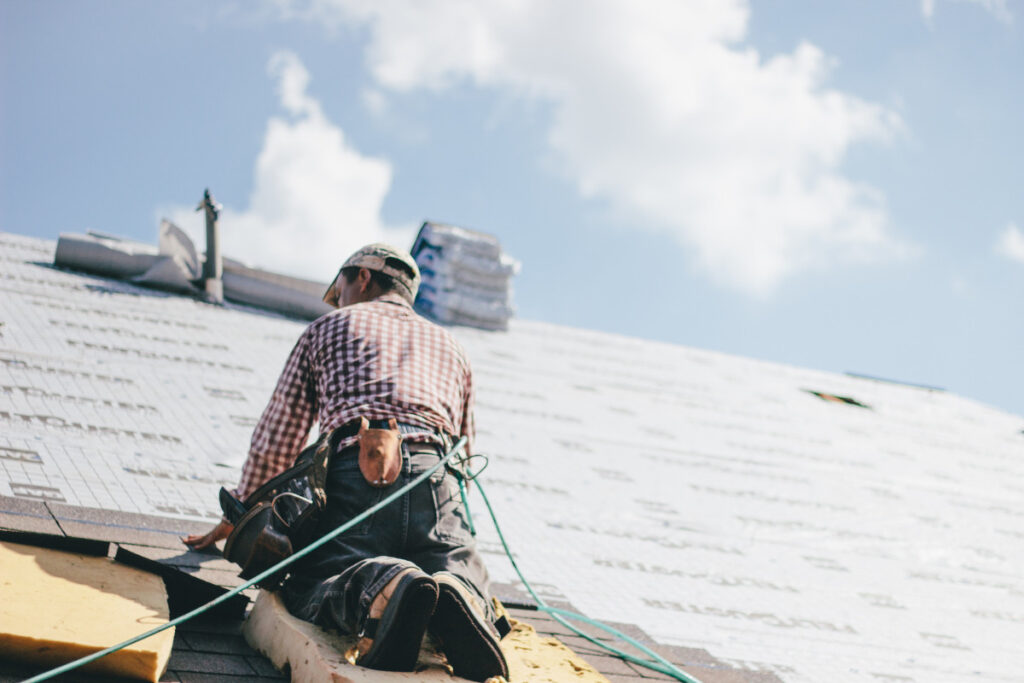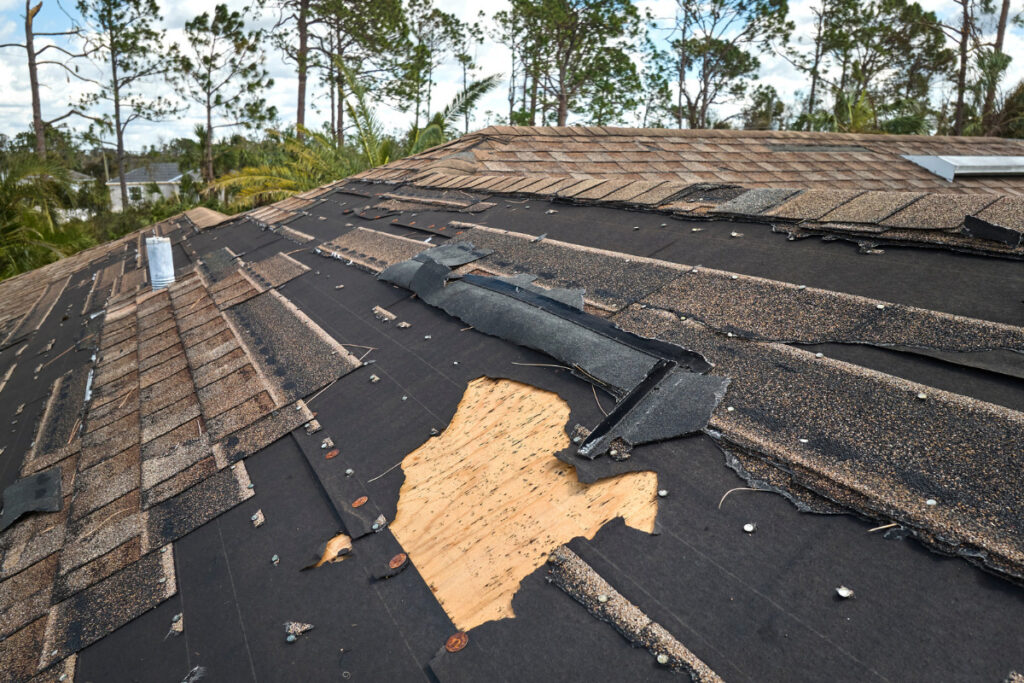Introduction
Investing in a new roof is a significant decision for any homeowner. And understanding the work involved can help demystify the process. In this blog post, we’ll explore what goes into replacing a residential roof. And how various factors contribute to its overall cost.
So whether you’re curious or considering a new roof, read on! Join us as we explore the essential home improvement task of budgeting for your roof replacement. We’ll break down everything you need to know, from inspection to material selection and labor costs.
Understanding The Work Involved In Replacing A Residential Roof
Replacing a residential roof involves a careful dance of essential steps: inspection, removal, installation, clean-up, and repair. Let’s dive in!
Inspection And Preparation
The first crucial step in replacing a residential roof is the inspection and preparation phase, which involves several key tasks:
- Conducting a thorough inspection: A professional roofing contractor will examine the roof’s current condition for issues before replacing it.
- Assessing structural integrity: Inspecting the roof structure reveals weak areas needing repair.
- Determining material removal needs: Inspect first to know how much to remove.
- Preparing a detailed project plan: Create a project plan after inspection to outline the scope of work, materials needed, and project timeline.
- Securing permits and approvals: Before beginning the roof replacement project, homeowners should get building permits and licenses to avoid fines or delays.
- Scheduling work timing: Proper scheduling is essential during preparation. Schedule right to minimize disruptions and have equipment and laborers ready.
By carefully inspecting and preparing for a residential roof replacement, homeowners can save valuable time and money while ensuring a high-quality result.

Removal Of Old Roofing Material
In the roof replacement process, you must remove old roofing material as it ensures a clean and stable surface for installing the new roof. Proper removal can also help you identify any underlying issues that must be addressed before installing the new roof. This step impacts the time and cost of replacing a residential roof.
- Assessing the condition of existing materials: Roofing experts inspect and determine whether the old roofing material can be left in place or removed.
- Acquiring necessary permits: Depending on local regulations, obtaining permits for removing old roofing materials may factor into the roof replacement cost.
- Preparing for disposal: Contractors must account for dumpster rental or other means of disposing of removed materials, adding to the average roof replacement cost.
- Time and labor-intensive work: Removing old roofing materials often requires significant manpower, contributing to higher labor costs associated with a new roof.
- Identifying hidden damage: Once old materials are removed, any damage beneath can be assessed and repaired before installing new roofing material, potentially increasing overall roof cost.
- Evaluating recycling options: Some homeowners recycle their old shingles when removing them from their homes, which could impact environmental and cost considerations.
- Ensuring safety precautions are taken: Removing old roofing materials presents a risk to workers and homeowners alike; proper training and equipment are essential to ensure safety throughout this phase.
If you plan to replace your roof, consider removing old roofing material. Knowing the details can help you make intelligent choices about budget and scheduling for this crucial home improvement project.
Installation Of New Roofing Material
- Selecting the appropriate roofing material: Homeowners must choose a material that suits their budget, style preferences, and climate conditions; popular options include asphalt shingles, slate, metal, or wood. Asphalt shingles are cost-effective (prices averaging around $2,500), easily installed, and available in various colors and styles. Slate roofing offers a high-end aesthetic appeal but comes with a heftier price tag (between $5,500 to $22,700 for an average-sized home).
- Installing the underlayment: This water-resistant barrier is laid over the roof decking to provide additional protection from moisture.
- Placing starter shingles: These are installed along the eaves to prevent water infiltration and form the base of your new roof.
- Installing the main roofing material: Roofing materials are fastened securely onto the roof according to manufacturer guidelines, ensuring proper overlap and sealing for optimal weather resistance. For instance, architectural asphalt shingles have an average roof replacement cost between $3.50 to $5.50 per square foot.
- Adding ridge caps or vents: These features help improve air circulation within your attic space and protect against weather damage at vulnerable points on your roof.
- Flashing installation: Metal sheets around chimneys, skylights, vents, and valleys to divert water away from these critical areas.
- Inspecting quality of workmanship: A thorough inspection is conducted upon completion of installation to ensure your new roof meets industry standards for safety and durability.
Remember that factors such as the size and complexity of the roof, the type of roofing material chosen, labor costs, and geographic location can greatly impact overall roof replacement costs.

Clean-up And Final Inspection
Once the new roofing material is installed, there are still two crucial steps before the project is considered finished. These final stages are clean-up and final inspection.
- Clean-up: The work area must be cleaned of all debris, including old shingles, nails, and other materials. In addition to cleaning up the yard, inspecting gutters and downspouts for any debris that may have gathered during installation is essential. Finally, a professional roofing contractor will use a magnet roller over the entire area to ensure no nails are left behind, which could cause injury or property damage.
- Final Inspection: After clearing everything away from the job site, a roofing expert will perform a final inspection to check that all materials are securely in place and every seam is sealed.
The inspector will verify that your roof meets building codes, regulations, and manufacturer requirements. They’ll also look for any signs of leaks or water damage around chimneys or skylights. Lastly, they will give you a report outlining their findings and noting any issues that need addressing.
By completing these last two steps correctly, you can feel assured that your new roof replacement was done correctly and thoroughly.
Repairing Or Replacing Damaged Decking
You must repair or replace damaged or rotten decking as it supports the roofing materials above. Inspect the condition of the decking before installing new roofing material during a roof replacement. This additional step adds time and cost to the project but is necessary for ensuring structural integrity.
Homeowners should work with their roofing contractor to ensure all necessary repairs are made during roof replacement. Properly repairing or replacing damaged decking ensures the safety and helps maximize your new roof’s longevity and efficiency while avoiding further costs in future maintenance and repair projects.
Additional Repairs Or Upgrades
Additional repairs or upgrades often must be addressed to replace a residential roof. This can include repairing or replacing damaged decking, essential for supporting the new roofing material and ensuring its longevity. Other upgrades may include adding new insulation or ventilation systems to improve home energy efficiency and air circulation.
Replacing a residential roof also allows upgrading other features such as gutters, chimneys, and skylights. For example, upgrading to seamless gutters can help prevent leaks and prolong the roofing system’s life. Additionally, a new skylight can enhance natural lighting and add value and visual appeal to your home.
It’s important to remember that these additional repairs or upgrades will factor into the overall cost of roof replacement. However, they also provide long-term benefits such as improved functionality and increased property value. By working with a professional roofing contractor who can provide expert guidance on needed repairs and enhancements, homeowners can ensure their investment in a new roof offers maximum return over time.
Factors That Affect The Cost Of Roof Replacement
The cost of a roof replacement is determined by various factors, including the size and complexity of the roof, the type of roofing material, labor costs, and geographic location. Want to know more about how these factors impact the cost? Keep reading!
Size And Complexity Of The Roof
The size and complexity of a roof are crucial factors that impact the cost of replacing a residential roof. An enormous roof requires more materials and labor, increasing the replacement cost. Roofs with more penetrations, such as chimneys or skylights, can add complexity to the installation process, driving up prices.
The slope of a roof is another factor that contributes to its complexity. Steeply sloped roofs require specialized equipment and safety protocols for workers during installation, increasing labor costs. For example, asphalt shingles are easier to install on low-pitched roofs than on steeper ones, making them less expensive in terms of labor costs. Homeowners looking for a new roof should consider these factors when estimating replacement costs.
Ultimately, each roofing project is unique – from the shape and size of the roof to its location – so there isn’t a one-size-fits-all approach to determining cost. However, homeowners should know that larger and more complex roofs generally involve higher material and labor costs than smaller or simpler ones.
Type Of Roofing Material
The type of roofing material used is one of the primary factors affecting the overall roof replacement cost. Asphalt shingles are typically the most common and affordable option, with an average price tag ranging from $5,000 to $10,000 for an average-sized home. Homeowners who opt for premium shingle roofs can expect to pay more than triple that amount. For instance, cedar shakes or metal roofs can cost between $15,000 and $30,000, depending on the complexity of the installation.
Rubber or composite roofing systems may be less popular but are gaining popularity due to their durability and energy efficiency. When considering replacing your residential roof with these alternative materials, it’s important to consider upfront costs and long-term maintenance expenses. Composite materials like synthetic slate or concrete tiles may cost anywhere from $15,000 to $30,000 for a complete roof replacement. In comparison, rubber options could range between $6,000 to $18,000, depending on the size and condition of your existing roof structure.
Your choice will depend on factors such as personal taste/style preferences & budget constraints alongside other considerations unique to you; however, it’s always best practice to consult with a professional roofer before making any decisions about which roofing product would be right for you.
Labor Costs
Labor costs play a significant role in determining the overall expense of replacing a residential roof. These costs vary based on roof size, complexity, material type, and geographic location. The table below outlines how these factors can impact labor costs for roof replacement.
| Factor | Impact on Labor Costs |
|---|---|
| Size of the Roof | Larger roofs require more time, resources, and manpower, leading to higher labor costs. |
| Complexity of the Roof | Roof pitch, shape, and slope can increase labor costs as they make installation more challenging and time-consuming. |
| Type of Roofing Material | Some materials, such as metal, require specialized installation techniques, which can increase labor costs. |
| Geographic Location | Labor costs can vary by region due to differences in local wage rates, cost of living, and demand for roofing services. |
| Additional Costs | Permits, disposal of old roofing materials, and other factors can contribute to overall labor costs for roof replacement. |
Geographic Location
The roof replacement cost can vary significantly based on where you live. This is because the cost of living, labor rates, and local regulations differ from area to area. For example, suppose you’re in a major metropolitan city like New York or San Francisco. In that case, the cost of materials and labor will be higher than in a smaller town or rural area due to higher prices. The same applies to environmental factors: areas with harsh weather conditions or high humidity may require more expensive and durable roofing materials, contributing to an increased total cost.
Consider location when budgeting for a new roof. Research local roofing companies to get accurate estimates and ensure compliance with specific requirements. Professional installation by experienced contractors is crucial for lasting results, regardless of region or weather conditions.

Importance Of Professional Installation And Maintenance
Hiring a professional roofing contractor for installation and maintenance is crucial to ensure the roof’s structural integrity, protect against environmental factors, and maximize its longevity and efficiency.
Ensuring Structural Integrity
One of the most important aspects of replacing a residential roof is ensuring its structural integrity. This means that the roof should withstand environmental factors such as wind, rain, and snow without collapsing or causing damage to the structure below. Professional installation and maintenance play key roles in ensuring this durability.
As part of the replacement process, professionals will inspect the decking beneath the old roofing material for any signs of damage or deterioration. If issues are found, they will repair or replace damaged areas before installing new materials. This ensures structural integrity and prevents costly repairs down the road.
In addition to proper installation, regular maintenance is crucial for upholding structural integrity over time. Homeowners can schedule inspections with professionals and perform routine maintenance tasks. Which includes cleaning gutters and removing debris from the roof’s surface. By prioritizing these efforts, homeowners can protect their investments while enjoying a safe and secure living space.
Protecting Against Environmental Factors
One of the most important reasons to invest in professional roof installation and maintenance is to protect against environmental factors. If you don’t install or maintain your residential roof properly, harsh weather conditions like heavy rain, snowstorms, and strong winds can cause significant damage. For example, poorly sealed flashing around vents and chimneys can allow water to seep into the home and create leaks. In severe cases, exposure to extreme temperatures can even cause warping or cracking in roofing materials.
A qualified contractor ensures your roof has proper waterproofing techniques during professional installation. And quality materials that will stand up against the elements. Regular maintenance checks can also identify minor issues before they become significant problems caused by natural wear and tear from age or weather-related damage.
Choosing the correct type of roofing material also plays a crucial role in protecting against environmental factors. Protecting your home from environmental stressors requires selecting a suitable roofing material. Options range from asphalt shingles to metal tiles, each with unique benefits based on your climate and budget. Conducting a life cycle cost analysis can help you make informed decisions and ensure long-term ecological protection.
Maximizing Longevity And Efficiency
Professional installation and ongoing maintenance are the most important factors in ensuring a long-lasting and efficient roof replacement. Proper installation by experienced roofing contractors ensures that all components are correctly installed. Ensure maximum durability and protection against environmental factors such as wind, rain, or snow.
In addition to proper installation, regular maintenance can also help maximize longevity and efficiency. This includes periodic inspections to identify potential issues before they become major problems and timely repairs as needed. Regular cleaning can also help prevent the buildup of debris that can contribute to moisture damage or other issues over time.
Pro installation and maintenance ensure cost-effectiveness and reliable protection for years to come. Although these services may have upfront costs, the long-term benefits far outweigh any initial expense.
Conclusion
Overall, replacing a residential roof is an enormous task. It involves careful inspection and preparation, as well as the installation of new roofing material. You must do these correctly to ensure long-lasting results.
New roof costs vary on size, material, labor, location, and repairs. Pro installation may cost more initially, but it ensures integrity, efficiency, and longevity, saving maintenance costs. Signs of roof damage? Contact DroneQuote for guidance through the process.
FAQs:
- What factors determine the cost of replacing a residential roof?
The cost of a new roofing system can vary based on several factors. This includes the type and quality of materials installed, the size and pitch of your home’s roof, and any additional repairs or upgrades needed to ensure proper insulation or ventilation.
- How long does it typically take to complete a total roof replacement for a residential property?
The length of time required to replace a residential roof depends upon several variables, such as the size and complexity of your existing roofing system and weather permitting. Still, generally, 1-3 weeks is estimated to remove & install entirely new roofs from start to finish.
- What are some common steps involved in replacing a residential roof?
- Can I save money by installing my residential roofing system without professional support?
Attempting DIY methods for replacing your home’s roofing structure can be dangerous if not done correctly. This could lead to costly damages over time. We recommend seeking professional help instead. Investing in experienced contractors for your roof installation is crucial. With proper training and expertise, they can handle unexpected issues that may come up during the process. Plus, they know the best installation techniques for all types and sizes of roofs. Don’t skimp on quality regarding such an essential investment in your home.


